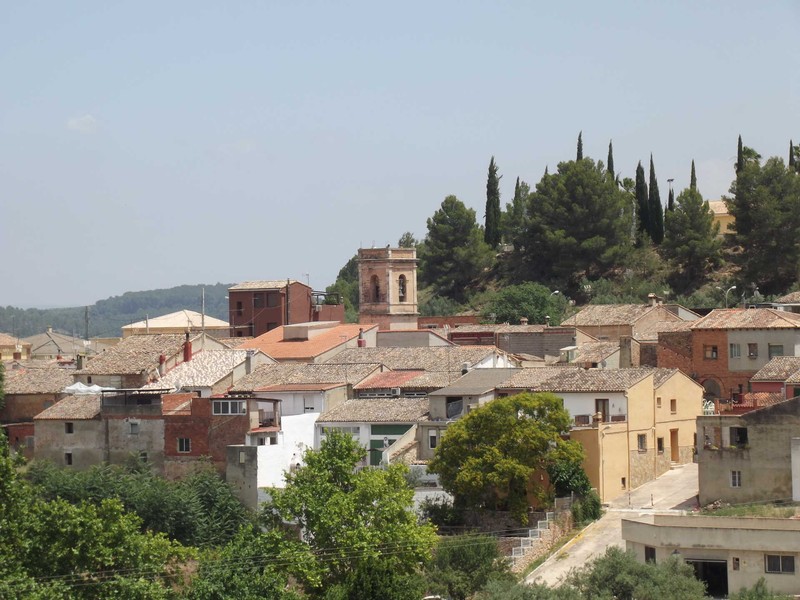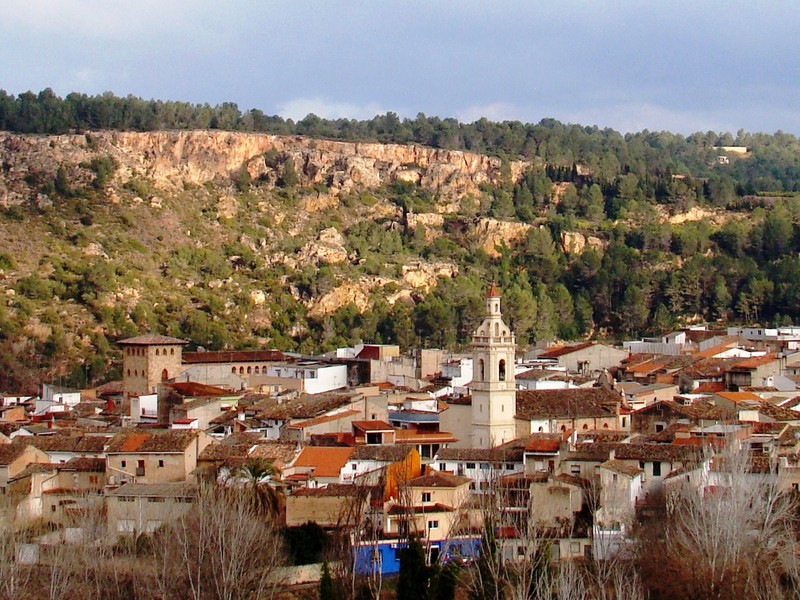Pico Caroche (Bicorp)
The Caroche or Caroig peak is a mountain of 1,126 meters, located in Teresa de Cofrentes, Spain. It is situated
Some of the Andalusí fortresses of the Caroig Massif and Muela de Cortes may date back to the 9th to 11th centuries, when a thriving pine logging business was operating and timber was brought down from the interior highlands to Cullera, from where it was exported to other parts of Al-Andalus, to the Maghreb and even to the treeless Nile Delta. However, it was from the 12th century onwards that a sophisticated fort system was developed for collective shelter and military defence. The fall of the Ebro Valley, Cuenca and Teruel into the hands of the Castilians and Aragonese encouraged the emergence of bands of knights and Almogavar soldiers who carried out raids over the Júcar river in order to pillage farmsteads. This is the reason for the defensive presence of the Andalusí fortress popularly known as El Castillet (the little castle) that overlooks Millares from a 310-m high rocky outcrop. The fortress was built using the tapial technique (rammed earth) on a base of rough stone.
It was in the period 1172-1240, in coordination with the Almohad Caliphate, which then dominated the Iberian Peninsula, when different types of castles and towers with a turret or annexed enclosure proliferated in the area. The architects Javier Hidalgo and Ignacio Matoses have identified 15 Andalusí fortresses on both sides of the Júcar river, from Cofrentes to Tous. Four of them are located in Millares: Cavas, El Castillet, El Corraliquio l’Antón and what little remains of the Castillo del Medio in the town (of which some rammed walls on Calle del Castillet are preserved). However, the latter may well have been the lord’s house, with a tower, enclosure and governor’s house, built in the 13th century by the first feudal lords to replace the Castillet castle. The subsequent construction of the Palacio de los Bou palace (16th century) may have hastened its abandonment and ruin. However, Medieval documents show it was the so-called Castillet (little castle) or Castillo de Abajo (lower castle), the one on the rocky crag and not the one in the town which held the title of “Castle of Millares”.
This Moorish building has maintained its walled perimeter intact, although it is badly eroded due to collapses. However, the southern main tower, with its rectangular floor plan, is still in good condition as it proudly sticks out above the other walls. The wall has an irregular perimeter, with two defensive towers, the aforementioned southern one, and a smaller tower in the north-western corner, which defends the entrance located in a strategic curve in the perimeter wall. This type of protected entrance with an outer wall is common in Almohad defensive structures. The larger tower retains some of its floor slabs, comprised of barrel vaults built with stone slabs joined together with lime mortar, a construction technique that, according to Hidalgo and Matoses, is repeated in the entry vault to the nearby La Pileta castle, located at the northern entrance to Cortes de Pallás.
The Caroche or Caroig peak is a mountain of 1,126 meters, located in Teresa de Cofrentes, Spain. It is situated
You will love La Canal de Navarrés! It’s an ideal destination for the whole family, to discover with friends, and

Estubeny, located in the interior of the province of Valencia, is an inland destination that hides a unique natural space,

Anna is a beautiful municipality in the Canal de Navarrés, well known for its Anna Lake, a lagoon surrounded by
Copyright © 2023. La Canal de Navarrés. All rights reserved.
Do not hesitate to contact us for any further information.
This website uses cookies so that we can provide you with the best user experience possible. Cookie information is stored in your browser and performs functions such as recognising you when you return to our website and helping our team to understand which sections of the website you find most interesting and useful.
Strictly Necessary Cookie should be enabled at all times so that we can save your preferences for cookie settings.
If you disable this cookie, we will not be able to save your preferences. This means that every time you visit this website you will need to enable or disable cookies again.